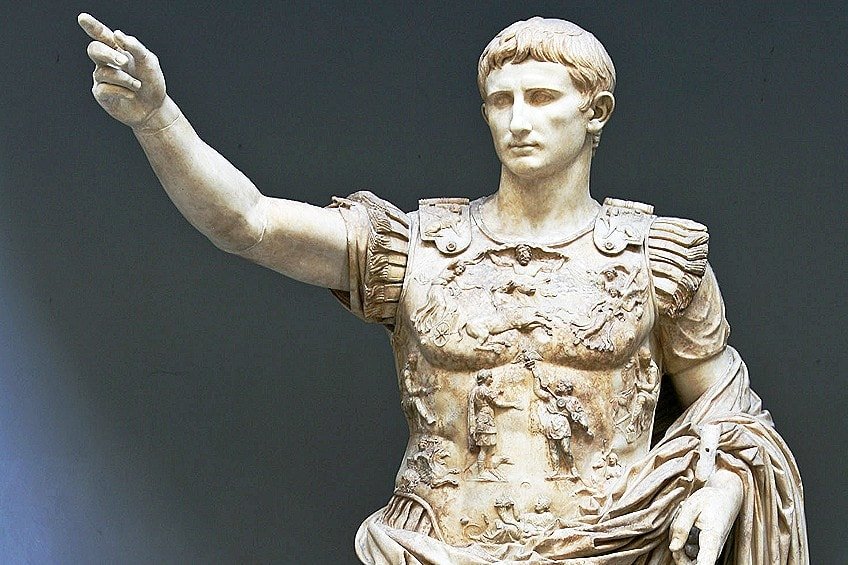The Augustus of Prima Porta is one of the most iconic sculptures from ancient Rome, representing the first Roman Emperor, Augustus, in a highly idealized and symbolic manner.
This marble statue, discovered in 1863 in the villa of Livia, Augustus’ wife, is celebrated for its artistic excellence and propagandistic intent. It captures the emperor’s power, divinity, and role as a military leader, embodying the ideals of the Roman Empire.
About the Sculpture
The Augustus of Prima Porta depicts the emperor in a commanding pose known as the “adlocutio,” or orator’s stance, with his right arm raised as if addressing his troops or the Roman people. The statue showcases Augustus as both a warrior and a statesman.
He is dressed in a richly decorated cuirass (breastplate) and a military cloak, with detailed carvings that carry immense symbolic meaning. The reliefs on the cuirass depict a diplomatic victory: the return of Roman standards from the Parthians, symbolizing Augustus’ success in securing peace through negotiation.
At his feet is a small figure of Cupid riding a dolphin, a nod to Augustus’ divine lineage as a descendant of Venus, the goddess of love. This connection to the gods reinforces his authority and the divine right to rule.

Artistic and Historical Significance
This statue is not merely a portrait; it is a powerful piece of propaganda. It idealizes Augustus, presenting him as eternally youthful, godlike, and a bringer of peace and prosperity. The Augustus of Prima Porta reflects the Roman artistic tradition of blending realism with idealism, as well as the political agenda of using art to legitimize power.
Where to See It
The Augustus of Prima Porta is housed in the Chiaramont Gallery, where it remains one of the highlights of the collection. Its commanding presence and intricate details make it a must-see for visitors exploring Roman art and history.
Visitor Tips
When viewing the Augustus of Prima Porta, take time to examine the details of the cuirass and the symbolic motifs. Consider how the statue combines artistry with political messaging, illustrating Augustus’ role not only as a ruler but also as the embodiment of Rome’s ideals and aspirations. Guided tours often delve into the rich historical context of this masterpiece, enhancing your appreciation of its timeless significance.

